
Operationalising Nature-based Solutions: innovative approaches to financing ecosystem restoration
Climate related disasters and inequities may push more than 100 million people in developing countries below the poverty line by 2030. This makes mainstreaming climate change mitigation and adaptation an absolute imperative for protecting ecological, social, and economic systems. Cities around the world are showing a growing interest in bringing nature to the urban commons, streets and public spaces, and towards protection and conservation of ecosystems at large.
Ecosystem restoration is also the theme for the World Environment Day, 2021. As the myriad benefits that natural ecosystems offer in combating climate change, and enhancing food security, water supply and biodiversity become evident, many Indian cities – such as Kochi and Hyderabad which are members of the global Cities4Forests initiative – are indicating increasing interest in investing in nature-based solutions (NBS) for ecosystem restoration.
However there exist challenges such as lack of awareness, available capacity and governance models needed for its adoption and operationalization. Access to funding and understanding financing modalities also remain key barriers. As a result, government and non-government stakeholders struggle to co-create and co-produce opportunities and interventions.
Three key barriers to operationalising NBS financing:
- Determining ownership for long-term maintenance: Any new blue-green intervention is well received by multiple stakeholder groups in the initial setting-up phase, but who will take ownership and who will pay for NBS maintenance in the long run remains an unaddressed issue. Public funding is limited, and often long-term measures are not given weightage in the urban planning process.
- Lack of experience in planning and developing: There is a lack of financial planning and business model expertise in environmental and planning departments. Often, tedious public procurement processes prove to be a hindrance in stimulating new innovations.
- Absence of good governance: Successful NBS implementation involves multiple actions to be taken across different departmental jurisdictions for which co-operation and co-ordination is vital. Lack of policy coherence, where one department or agency sees NBS projects as the responsibility of another, results in trade-offs, conflicts and inaction.
There are, however, noteworthy NBS examples emerging from around the globe where innovative business models and inclusive governance practices have leveraged public investment and successfully gained private sector support.
Public sector-led approach
- Stuttgart’s NBS policy is an example of a comprehensive set of nature-based solutions coupled with key regulatory policies and incentive schemes. This has resulted in over 60% of Stuttgart’s area being vegetated and 39% of its area being protected to preserve natural biodiversity. Stuttgart has approximately two million square meters of vegetated roofs which absorb pollutants and reduce excess heat. Tax incentives and strategic financial programs have contributed to the city’s green roof expansion strategy.
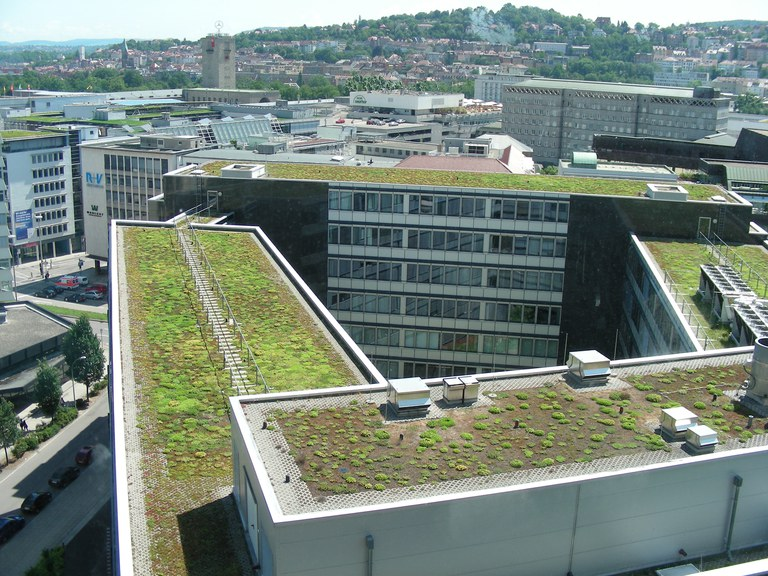
Stuttgart city: Office of Environmental Protection promotes green roofs. Photo by Climate Adapt 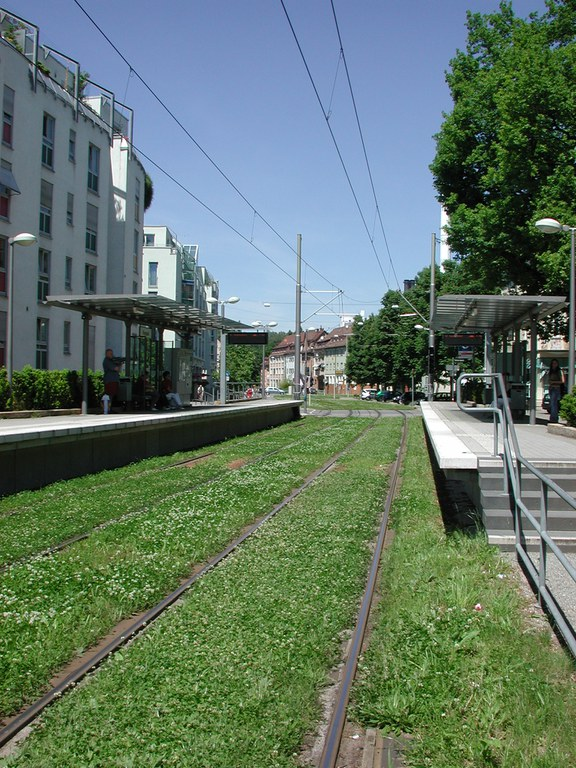
Stuttgart’s tram tracks as ventilation corridors for cooling the city. Photo by Climate Adapt - Shenzhen’s Sponge city transition has resulted in green roofs, raingardens and permeable pavement capable of capturing over 60% of annual rainfall in the Guangming New District. This is a low impact model for stormwater management, led by provincial and local governments, through China’s sponge city program, which provided the financial impetus and subsidies for implementation, along with non-profits, local community and private businesses as partners.
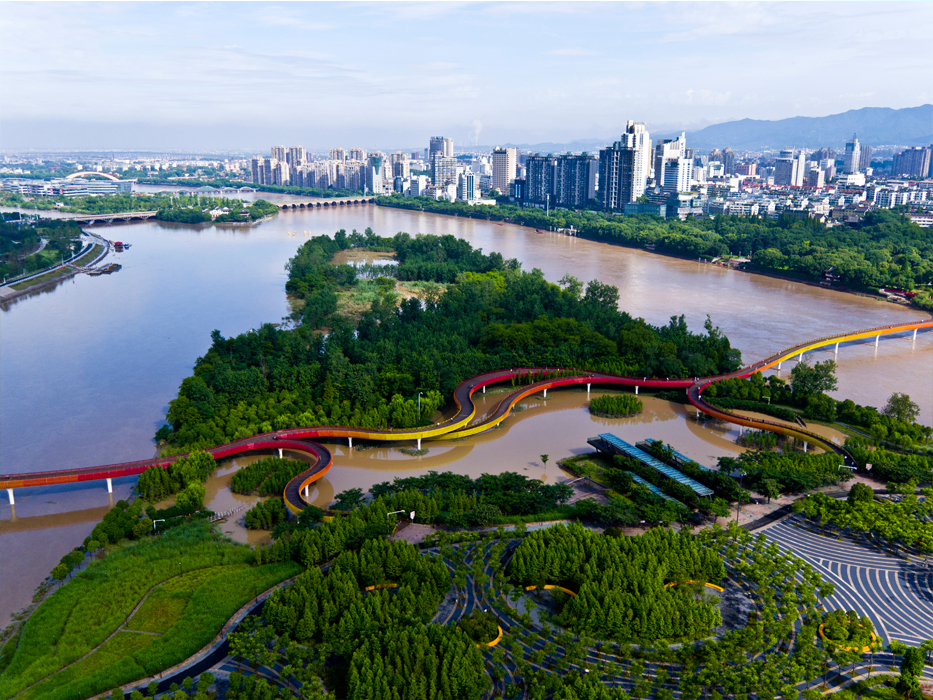
China’s sponge cities: building resilient landscapes. Photo by Turenscape-Yanweizhou park in Jinhua city project - Indore water-body restoration consisted of developing artificial floating islands to purify the water while also serving as a habitat for birds and improving the aesthetic quality of urban lakes. This was facilitated and funded by international non-profits and undertaken with the municipal government. It is monitored by local water conservation and management committees.
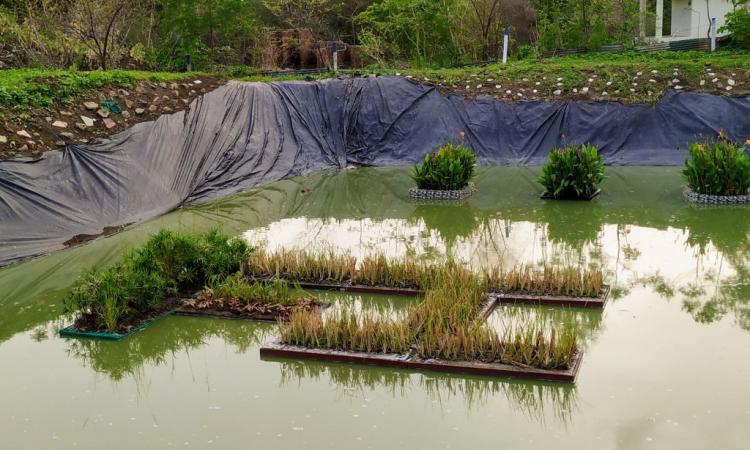
Indore’s floating islands for lake restoration. Photo by India Water Portal - Rotterdam’s green interventions include permeable tiles, permeable grass strips and vegetation to green parking lots, sideways and pockets. Rotterdam municipality used green bonds to finance small scale, low-cost NBS interventions to deal with the impact of river tides.
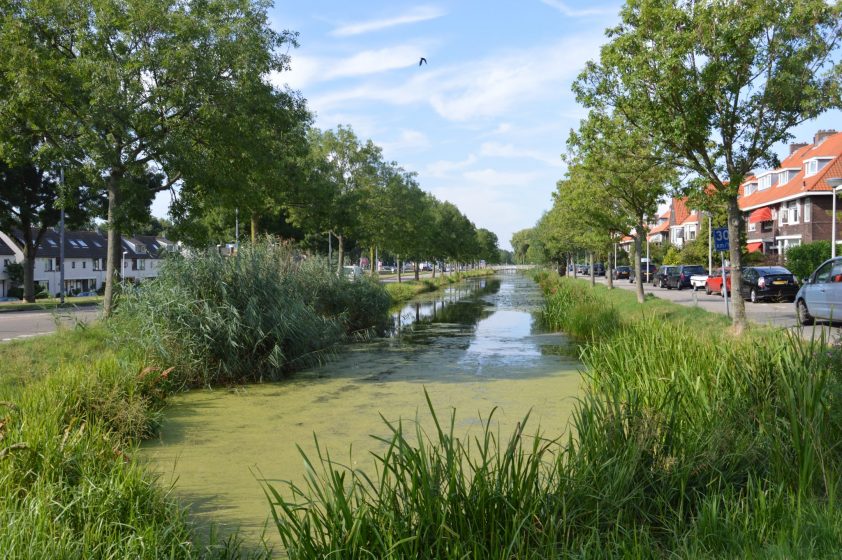
Rotterdam’s green strips. Photo by Marthe Derkzen/Nature of Cities
Private sector-led approach
- Volkswagen along with the Government of Mexico (private-public partnership) has taken long-term measures for reliable water supply in the region of Puebla-Tlaxcala Valley in Mexico. The measures include planting trees, digging pits, and developing earthen banks which enabled more than 1,300,000 cubic meters of additional water per year to be fed into the ground reserves.

Volkswagen restoring ecosystems on the volcanic slopes of Popocatépetl and Iztaccíhuatl for continued water supply. Photo by Think Nature - Ambuja Cement Foundation’s quarry rehabilitation of the mined out and surrounding areas have resulted in the capture and preservation of freshwater in artificial lakes (closed quarries). The Foundation is following a landscape approach that includes tree planting activities and improving degraded areas near Gir forest.
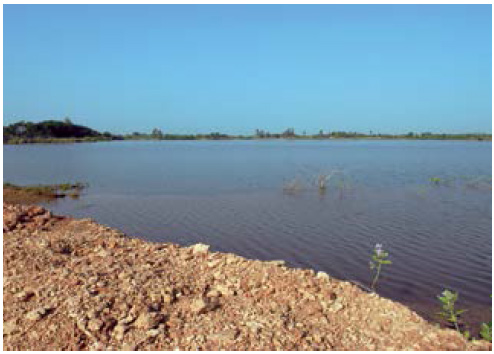
Ambuja Cements turn quarries into lakes for ecosystem restoration. Photo by Ambuja Cement - Dow Chemical Company (DOW) constructed wetlands for wastewater treatment with lower capital, operations, and maintenance costs, as well as lessened energy and resources requirements, as compared to a gray infrastructure approach. The natural infrastructure solution resulted in reduced construction and implementation time, along with ancillary benefits of increased biodiversity as well as community educational opportunities.
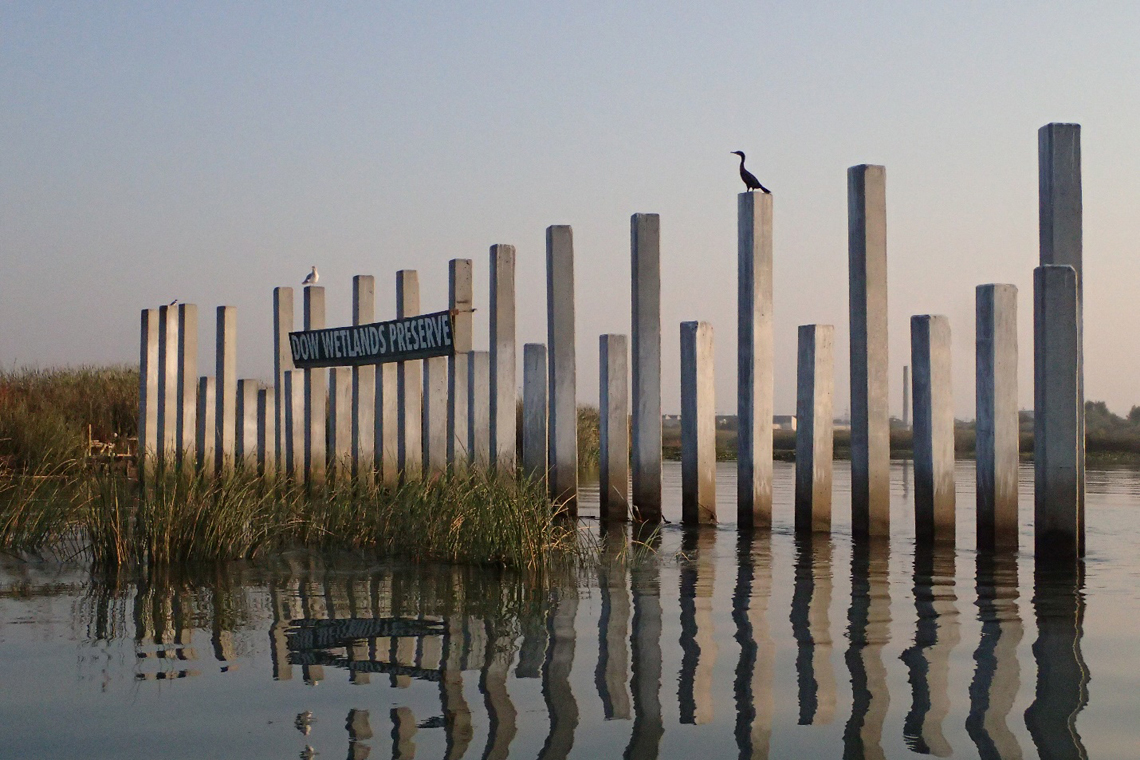
Dow turns to wetlands for wate water treatment and restoring biodiversity. Photo by Antioch California
The above examples illustrate how different cities have incorporated and implemented NBS at different spatial and regulatory scales. While public finance is the most commonly used source of funding for NBS projects, to meet the global and local targets of sustainable development, climate change adaptation and biodiversity conservation, all partners need to be consulted and engaged. In this context, the private sector plays a very important role because they have the skills (technical knowledge, administrative, delivery and implementation) that complement government actions. Private sector business are considerably dependent on natural resources for their sustenance and 90 % of business leaders believe that they have a role in building resilience and preparing cities against climate change impacts. Hence, business models which can quantify value of nature at multiple scales and showcase a reliable return on investment can help rally support from different stakeholders.
As India aims to grow into a US$5 trillion (INR 364 trillion) economy by 2024, climate-proofing the economy and building resilient development sectors must be given priority. NBS may be the most cost effective and practical way forward to protect against extreme climate events and in building resilient economies.
Views expressed are the authors’ own.